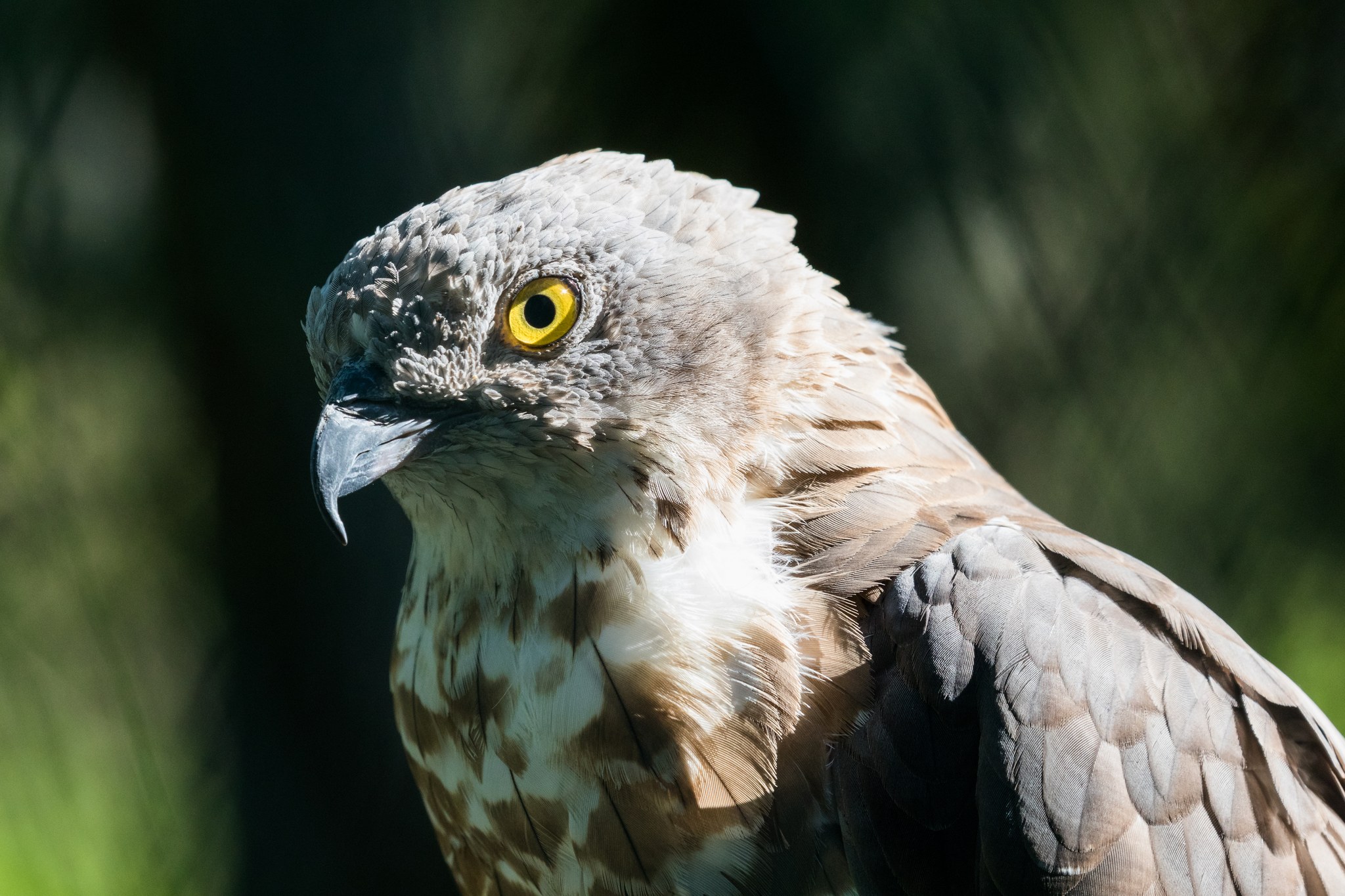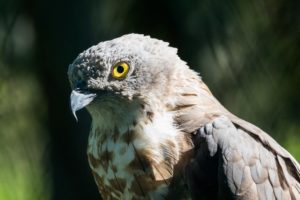
Honey buzzard
LIVING HABITS
The honey buzzard can be found in the central and southern parts of Finland all the way up to the regions in the southern parts of Lapland. The honey buzzard prefers broad-leaved forests and mixed forests as their habitat. Usually, the honey buzzard selects a spruce tree for nesting. Honey buzzards migrate to Finland first at the turn of May-June, when their primary food, bees and wasps and bumblebees with their pupae and larvae are abundant in the country. The honey buzzard eats other insects, as well as, birds’ eggs and young ones, adding into their diet berries and fruit of trees by the end of summer. The honey buzzard likes to stay well out of sight. Migration starts in August, and the last individuals have left the country already by mid-September.
PROTECTION
The honey buzzard is a protected species in nature conservation areas. As a bird with quiet lifestyle, it doesn’t confront many threats in Finland. Along the migration routes around the Mediterranean countries, thousands of honey buzzards lose their lives in the hands of free-time shooters annually.
ADAPTING TO WINTER
The honey buzzard migrates to Western Africa for their winter grounds in rain forests.
Honey buzzard
Pernis apivorus
Class: Accipitriformes – Diurnal Birds Of Prey
Family: Accipitridae – Hawks And Eagles
Size: Weight: 450-100g, wingspan: 135-150cm, females larger than males.
Breeding: The female lays 1-3 eggs in June, incubation period: 31-37 days and nights; also the male hatches the eggs.
Lifespan: According to ringing data, the oldest honey buzzard has lived to 29 years of age.


Did you know…
Did you know, that young honey buzzards spend their first summer on their winter grounds in the tropics of Africa, returning back to Finland first at the age of two years?




